Salzburg’s small, picturesque old town nestles on the city’s Mönchsberg and Kapuzinerberg mountains, and its baroque splendor with the Cathedral Quarter and Hohensalzburg Fortress has been a Unesco World Heritage Site since 1997. One could say Salzburg is beautiful by nature. The advantageous geographical location on the northern edge of the Alps and on the Salzach River provided the first tentative tourism as early as the 18th century. Even then, baroque, churches, nature, inns, cafés and monastery parlors were a perfect melange for a trip to the prince-bishop’s residential city.
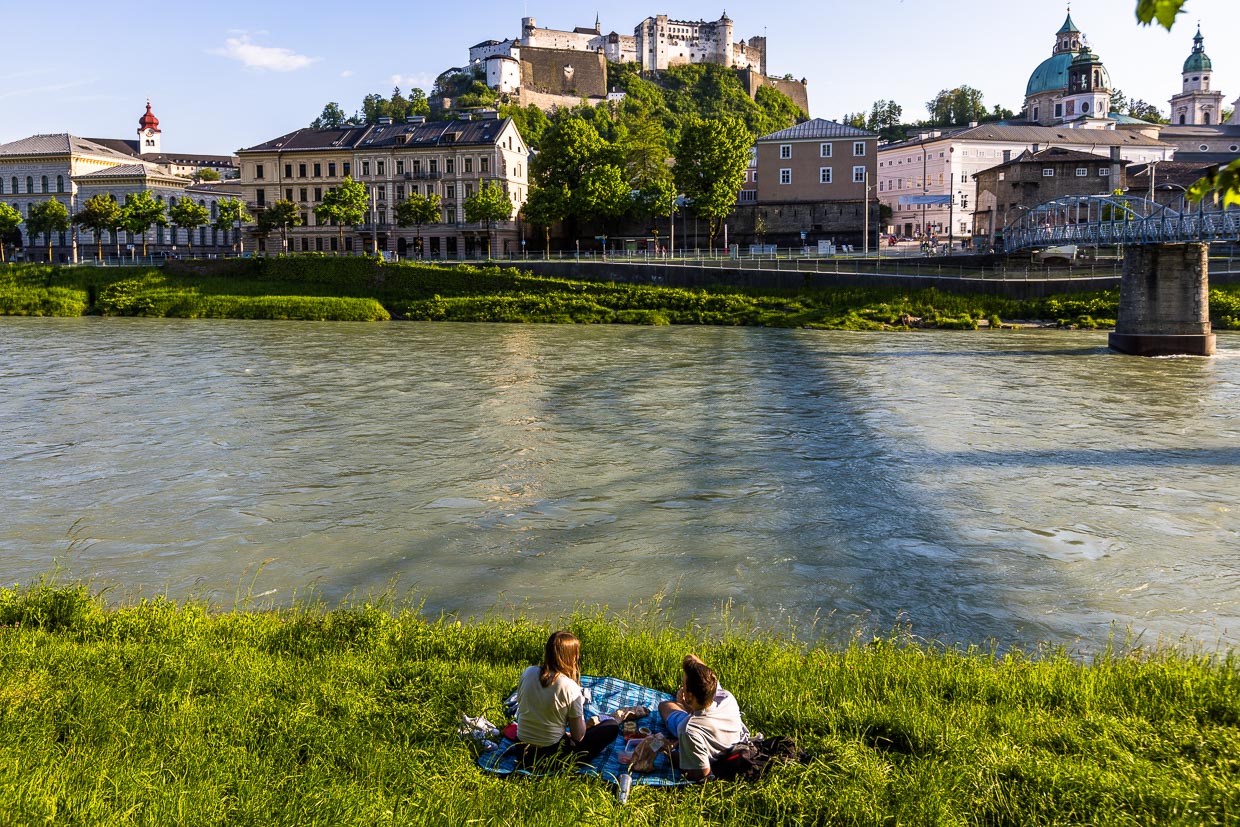
Amadeus in all places
Many things in Salzburg today point to the city’s most famous son. Wolfgang Amadeus Mozart was born on January 27, 1756 in the Getreidegasse. Today, the eternally young child prodigy leaves his mark on the city. Visitors from all over the world meander through the small rooms of his birthplace, marvel at a replica of his childhood violin, visit his early places of activity such as the cathedral and the Old Residence, as well as the inns where Mozart liked to socialize. In addition, there are monuments, statues and even cardboard cutouts with Mozartkugel advertisements and Playmobil figures in rococo tails. The brilliant composer and musician became the genius loci of Salzburg. For today’s tourists, themed city walks are available as flyers or apps. On the city walk In Mozart’s Footsteps, between Mozartsteg and Müllersteg, you’ll encounter the historical, the hilarious, the controversial and the absurd.
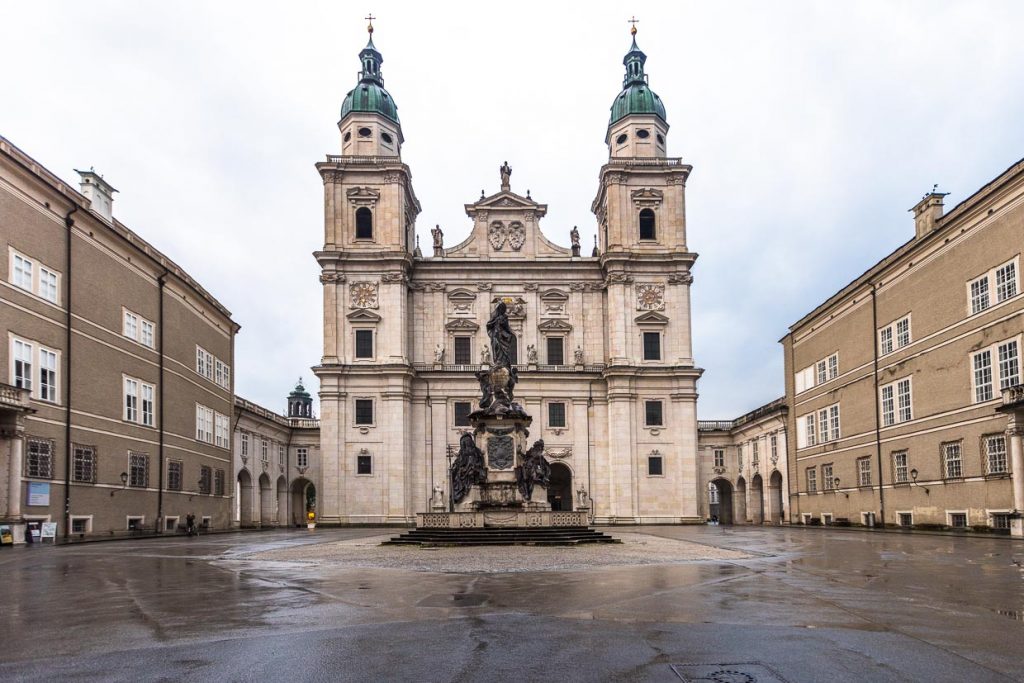
Mozart Tourism – how it all began
For the year 1841, fifty years after Mozart’s early death, the city planned the dedication of a Mozart monument. Not without calculation, because in 1800 the archbishops had left Salzburg. The already existing tourism in the former residence city ebbed away, the church’s money was lacking and Salzburg was threatened with insignificance. When a consortium of artists wanted to erect a statue of the composer in 1830, the city administration saw an opportunity. But there was no money for what today would be called city marketing. Finally, the Bavarian King Ludwig I financed the marble base of the monument. The sculptor Ludwig Schwanthaler also came from Bavaria. It is thanks to his artistic idealization that a tall, handsome Mozart stands on the pedestal, quill in hand, looking proudly at the Old Residence, the seat of his archiepiscopal employer.
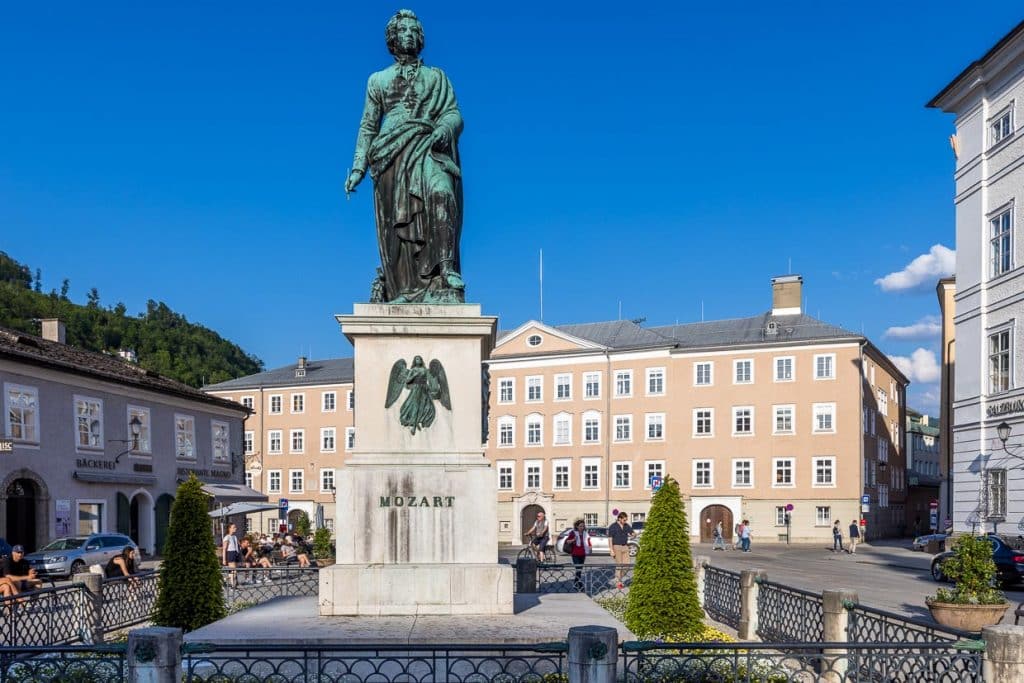
Both of Mozart’s sons were present at the unveiling of the monument in 1842. Franz Xaver, a composer like his father, had written a cantata for the occasion, and the city administration turned the dedication into a big celebration with concerts, tourist excursions and the first souvenirs with Mozart’s likeness. In a way, it was the beginning of a Mozart hype that was unstoppable. This was followed by recurring Mozart Weeks and finally, in 1920, the birth of the Salzburg Festival.
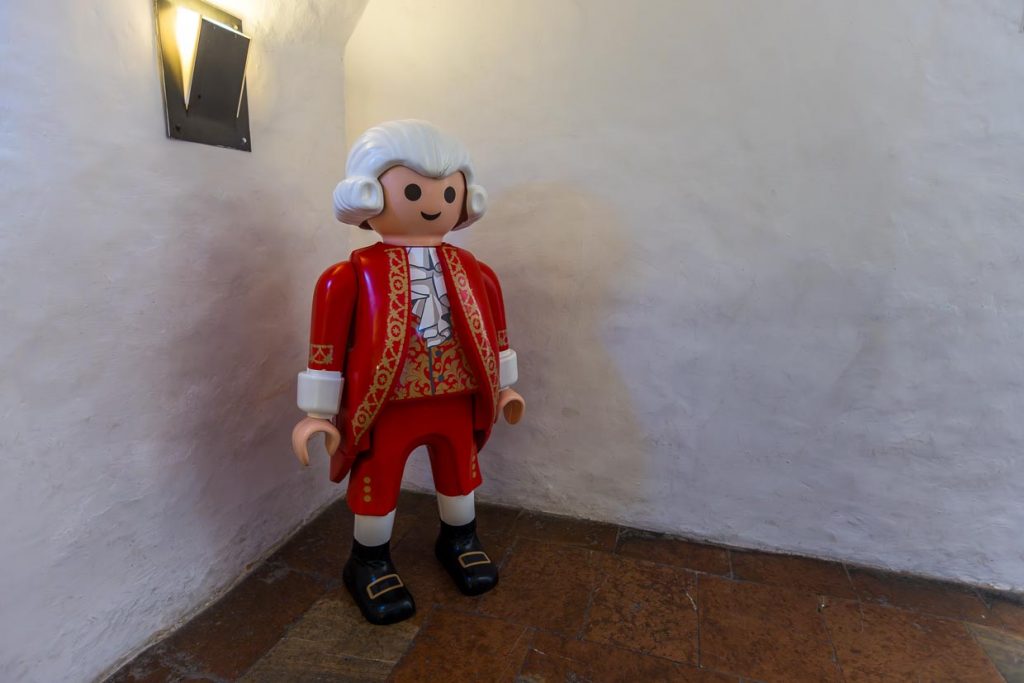
Cosi fan tutte – They all do!
The house where Mozart was born in Getreidegasse is the place that attracts the most Mozart tourists. When Mozart’s parents moved into the house, they were very lucky that the small windows on the third floor looked out onto Hagenauer Platz. This gave them more light in their rooms. Today, this square provides space for the many tourists waiting to get in. The house is the place most closely associated with Mozart. Here he spent most of his life and wrote his first compositions. Since 1880, the house where he was born has been a museum. Mozart’s widow Constanze and his two childless sons left many personal mementos to the Mozarteum Foundation. Among them are portraits that show Mozart as he must have really looked. Of small stature, with a scarred face, large nose and protruding eyes. An exciting contrast to the musical hero on the marble pedestal at Mozartplatz.
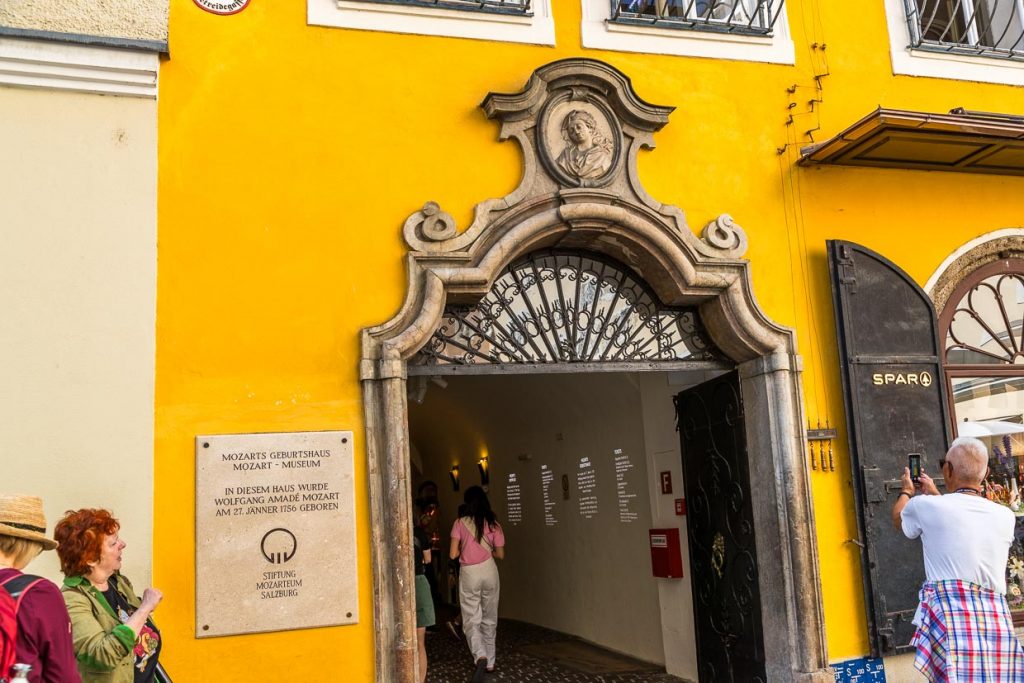
Mozartsteg and almond milk
A city walk In Mozart’s footsteps through Salzburg’s compact old town is also exciting because original sites are combined with what are now also historical, but also contemporary, memorials to the musical genius. The Old Residence, the house where he was born, his favorite Café Tomaselli or the Cathedral are places of his work.
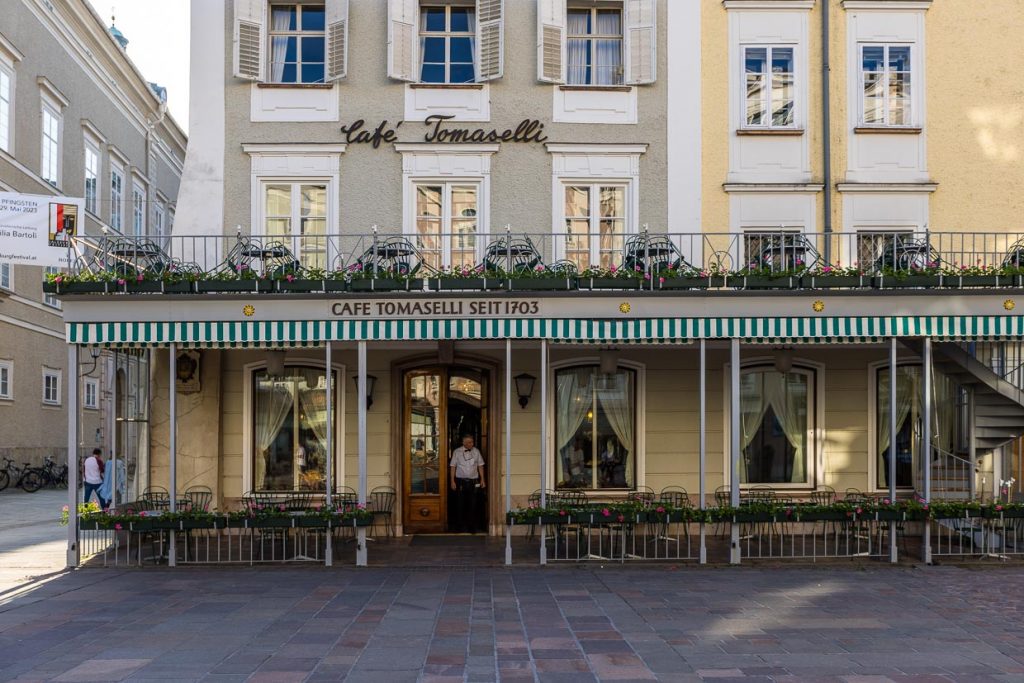
The Mozart Bridge from 1903, the Mozart Monument from 1842, the Spirit of Mozart installation by Marina Abramovic from 2004 or the controversial sculpture Mozart – A Homage by Markus Lüppertz, which shows Mozart with a woman’s body, bear witness to the continuing Mozart veneration through the ages. The House for Mozart and the Mozarteum Foundation, the Mozart Days and Mozart concert series offer numerous opportunities to hear Mozart’s music.
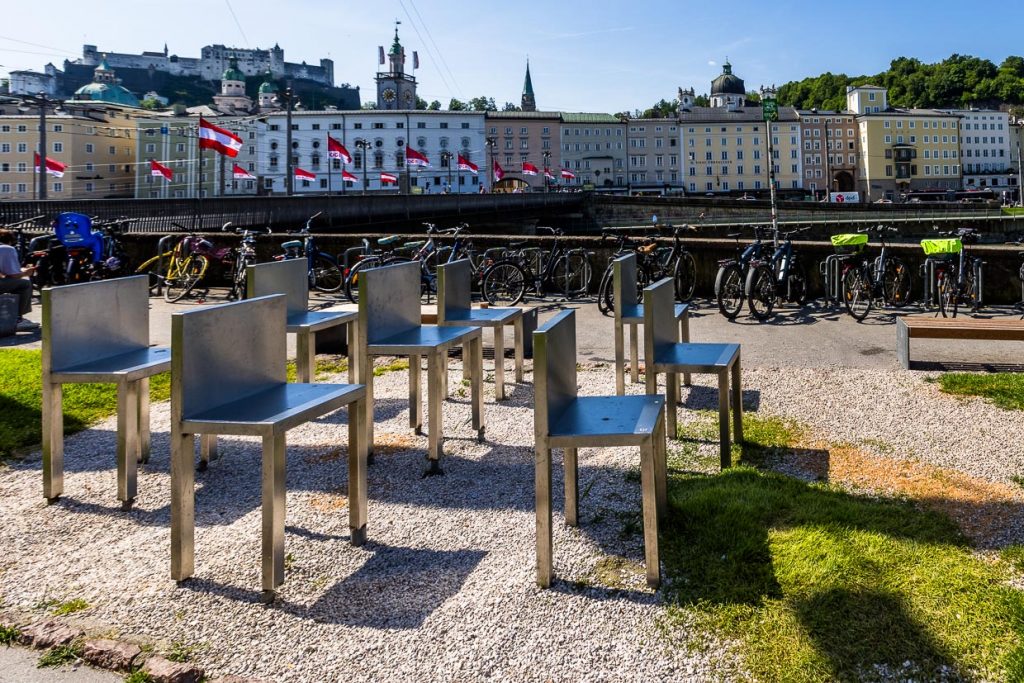
From Mozartkugel to squeaking duck
Mozart souvenirs have been around since the day the genius was placed on his pedestal in 1842. The beer mugs and pipes with Mozart’s likeness were to be followed by a lot of trinkets and odds and ends offered to tourists as souvenirs of a visit to Salzburg. One of the most beautiful souvenirs to this day are the original Salzburg Mozartkugeln. Although they are also a product of Mozart mania, they date from its early days and have themselves achieved cult status. The confectioner Paul Fürst invented the round praline with a marzipan core in 1890, and to this day it is only produced in Salzburg according to the original recipe. Click here for a report on the original Mozartkugel, Venusbrüstchen and Salzburger Nockerln.
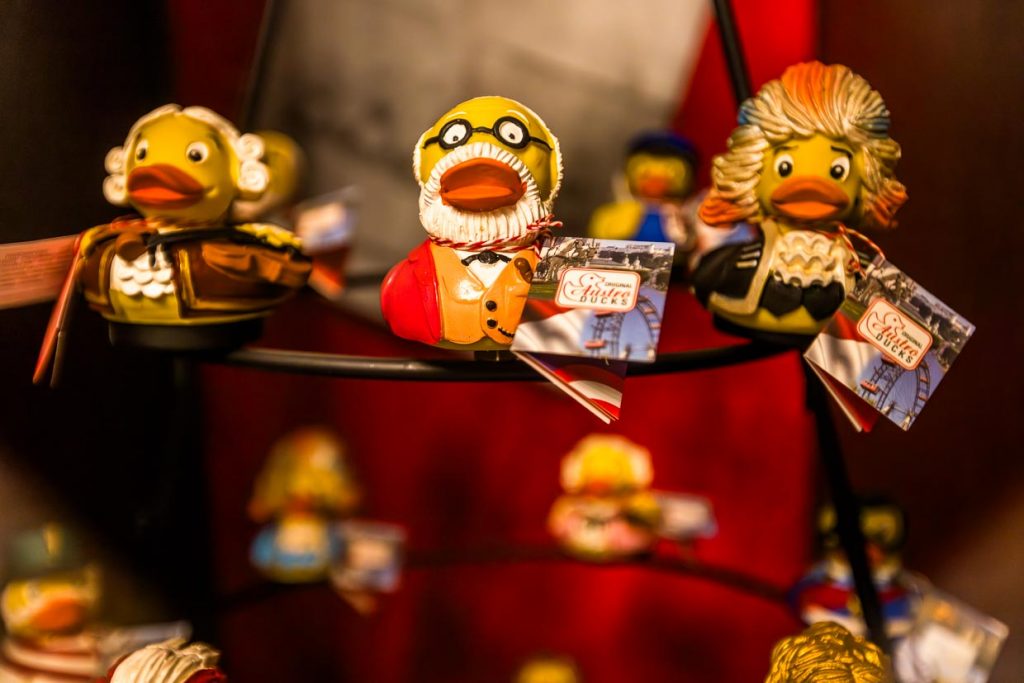
The matching city walking route through Salzburg is just a scan away each time. Salzburg Tourism offers routes online. The topics range from Mozart, to festivals, Papal States, beer culture and Unesco World Heritage or simply Instagrammable.
The research trip was supported by Salzburg Tourism

